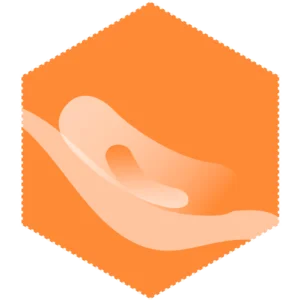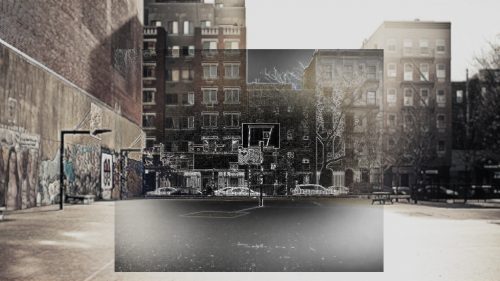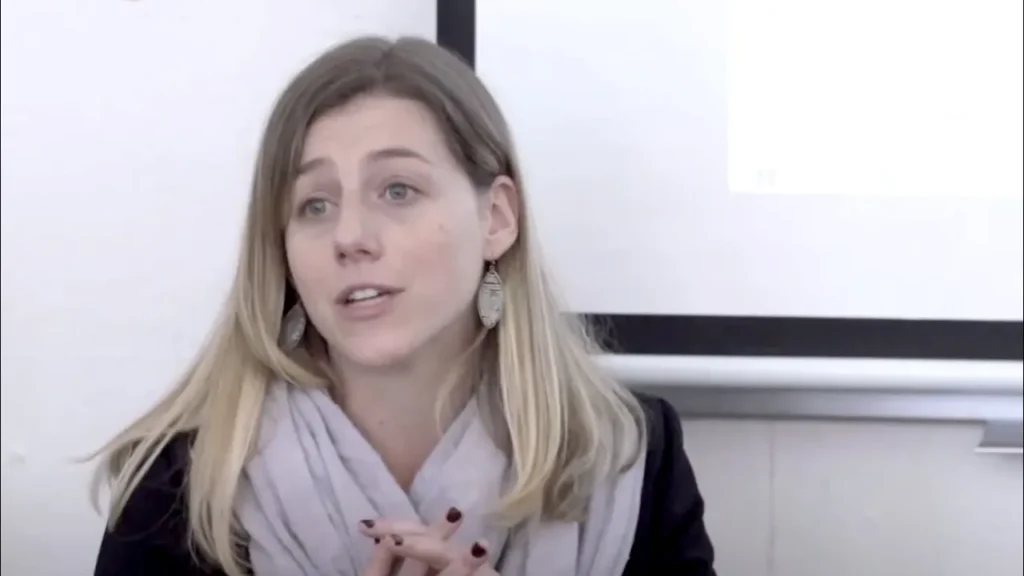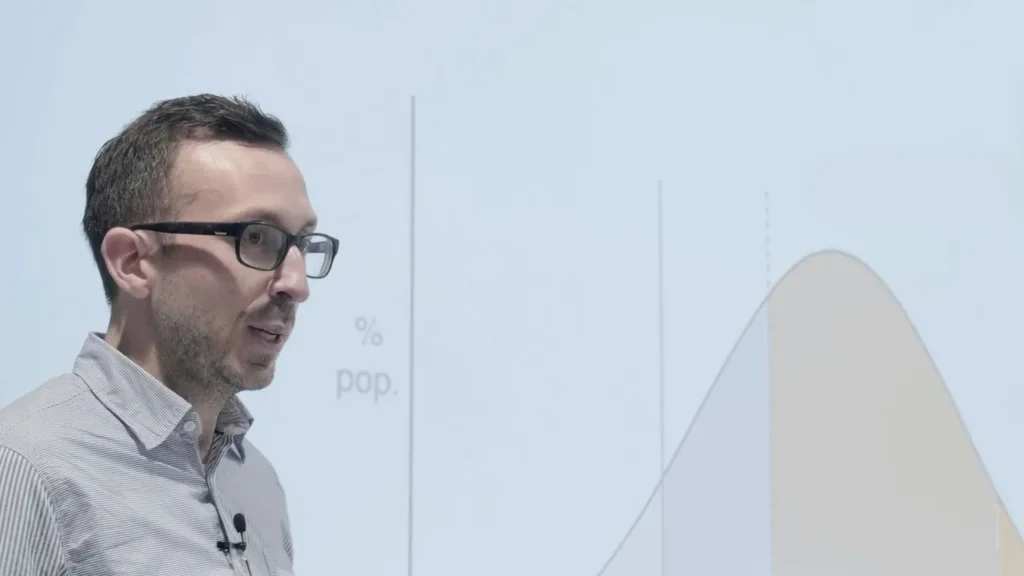Ask the average person if they have a good sense of direction and most will say “No, it’s terrible” or “I’m always getting lost”. However, the brain actually has a remarkable capacity to maintain a sense of direction. While one may not always be able to point to North, nevertheless the world feels perceptually stable – it does not seem to spin – and people generally have relatively little difficulty finding their way from one room to another, or from one building to another or even one part of the city to another. Research in the past few decades has made great strides in understanding how this happens in the brain.
This capacity for remaining stably oriented while moving through space depends on the ability of the brain to detect and use reference frames. A reference frame is a set of fixed points in space that movements are measured relative to. For example, if you are walking around on the deck of a boat, you only need to know your movements relative to the deck – it is not necessary to take into account the movement of the boat through the water, or of the water relative to the river bank, or of the Earth through space – the deck is a local reference frame, sufficient for immediate walking purposes. For urban designers creating navigable spaces, it is important to understand reference frames and how the brain uses them for action and for planning routes.
Two reference frames – egocentric and allocentric
The brain uses two general kinds of reference frames1. One, which is often called “egocentric” is centred on the self and moves along with it: that is, the frame is provided by one’s own body. This is the sense that enables a person to stay upright and to move around on two legs without falling, to move the eyes in their sockets and limbs around their joints. Many movements only need an egocentric reference frame – to pick up a coffee cup, it is not necessary to know where it is in the world at large; merely that it is within reach of your arm. Intriguingly, there are multiple egocentric reference frames – one for the head, one for the arm, one for the hand, one for the whole self, etc. We know this because sometimes stroke patients suffer a syndrome known as hemispatial neglect – they behave as if they do not know about one – usually the left – side of space. Such patients may shave only the right half of the face, eat food from only the right side of their plate, only use their right arm even though the left is perfectly functional etc. Amazingly, a neglect patient may neglect the little-finger side of the right hand when the palm is facing up (because it is on the left) but the thumb side when it is facing down (because this one is now on the left)2. Thus, all the information about space is there in the brains of these patients, but cannot be accessed because the person does not have the reference frame needed to recognize the space and organize movements relative to it. The managing of egocentric reference frames is handled by a part of the brain called parietal cortex, and such patients have usually had a stroke affecting the right parietal cortex (so these are often called parietal neglect syndromes).
The other major spatial reference frame is “allocentric”, which literally means “centred on the other,” and in spatial cognition is usually taken to mean “centred on the world”. Allocentric orientation depends on features of the environment that are perceived through the senses – mainly vision – and it relies on a reference frame “out there” against which movements such as walking are compared. The boat deck mentioned above is a good example of an allocentric reference frame.
Much of the capacity to assess movement relative to an allocentric reference frame depends on the vestibular system, which is the system of balance organs (sometimes called labyrinths) in the inner ear that detects head movements and signals these to the brain so that it can organise the necessary postural or positional adjustments. This is done mostly unconsciously but we become much more appreciative of this capacity when it goes wrong – for example during vertigo, alcoholic “spinning” or inflammatory labyrinthitis. We also become aware of it during movements we have not initiated ourselves, such as on a merry-go-round or in a car. Mismatch between what the labyrinths are signaling and what the eyes are seeing (such as in a ship’s cabin, when the interior looks not to be moving but the vestibular system says otherwise) is a major cause of motion sickness.
The vestibular system has two sets of organs, one for detecting rotations, called the semicircular canals, and one for detecting linear motion called the otolith organ. These are fluid-filled cavities lined with sensors that detect when the fluid moves, and so they are sensitive to acceleration through space, signaling that a movement has begun or ended. Other systems then take over and confirm the direction and speed of this movement, perhaps by detecting the speed at which the world moves past the eyes (optic flow) or the frequency and length of one’s strides, etc. These detectors together help the brain determine how its owner is moving through the world, and thus relative to an allocentric reference frame.
Movement induces complicated changes in the information coming in to the senses – everything changes moment by moment. The brain has the task of deciding which features in the environment are static, and hence part of this frame, and which are mobile and therefore not part of it. We take this capacity for granted – when walking across a room, every part of the visual world is moving past the eyes, and yet the world feels stable and we feel as though we are moving through it in a steady way. This is because the brain is able to calculate that the moving features are all moving together, and also that the vestibular system is signaling movement, and so it can infer therefore that the movement is due to one’s own movement and not movement of the world. This is a non-trivial accomplishment because the speed at which things move past the eyes depends on how far away they are, and the details of how the brain does this have not yet been completely worked out. Indeed, the brain is occasionally fooled, when the world does move en bloc as when a neighbouring train moves past the window of a stationary carriage and generates a strong feeling of self-motion. However it is remarkable how rarely such illusions occur. Mostly, when the visual world moves, we know it is because we ourselves are moving.
The head direction system
As well as needing an allocentric spatial sense to determine whether things in the world are moving or whether the self is, subjects also need it to navigate. Instead of a local frame of reference, such as the current room, it is necessary to have a larger reference frame that incorporates not just local information but also information about the goal, and about how to get to it from the current position. To navigate across this larger frame, which might be a building, a city block, a whole city, a country or even a planet, one needs a compass of some sort that links the current location to the goal. Work in the past three decades has uncovered a network of brain regions that collectively form the internal compass, or sense of direction. These head-direction regions are connected to the visual system, and visual features of the environment – usually called landmarks – are very important for forming a sense of direction3. For example, if a subject is disoriented by spinning and then led into a familiar room, they can immediately re-orient using the room’s features, which they recognise. If on the other hand they are led with eyes closed into an unfamiliar room, then when they open their eyes they can quickly use the visual features of the room to form a stable local reference frame, so as not to feel disoriented any longer, but they could not point to a known location outside the room. This is because they would not know how the things in the room and the things outside the room were related. The head direction system normally provides the linkage between these spaces. Note that to navigate from one room to another, or perhaps across it into a third, it is not necessary to know how any of these rooms are oriented with respect to the outside world, or to know where North is. It is only necessary to know how the rooms are related to each other that is, how they are related within the relevant reference frame, which in this case is the building.
How does the head direction system make the linkage between the rooms? If they are separated by glass walls then it could just use vision – in a normal world, however, where spaces are not necessarily visible to each other, it uses our old friend the vestibular system again. Studies in rats have found that the head direction system is very sensitive to alterations of the vestibular sense4. These studies have also found that when new landmarks are first encountered, the vestibular sense is used to “attach” these to the current active reference frame5, provided they are stable (i.e., not moving relative to the rest of the visual panorama). If this goes awry – for example, if the animal was somehow disoriented when it passed from one room to the next – then it can take quite some time for the brain to sort itself out and establish a global orientation that links the two rooms together6.
This is almost certainly true for humans too, and is something urban designers would do well to note. When people cross from one space to another, they need linkage information so that the head direction system can unify the two local reference frames into a single, larger one. For example, when travelers emerge onto a station concourse and then navigate out to the street, they may cross several local reference frames – the escalator, the concourse, the stairwell and then the street-level exit. Without linkage information to enable these reference frames to be aligned, people can lose a lot of time searching for signposts to point the right way and then set them in the right direction at street level. Simple judicious use of landmark and directional information could make signs unnecessary – the brain’s navigation system did not evolve to use verbal signs, and does so only with difficulty.
Summary
In summary, then, the brain needs reference frames in order to organize movements. These can be self-centred (egocentric) or world-centred (allocentric) and they can be local (close by and immediately perceivable) or global (larger scale and perhaps beyond the immediate reach of the senses). The vestibular system plays an important part in helping the brain organize these reference frames, to relate the body to the frame and the frame to other frames, while the egocentric parietal system and the allocentric head direction system work together to help organize movements within and between spaces. Urban design that facilitates navigation needs to respect the brain’s need for reference frames that are consistent with one another, so that people can quickly and easily establish a stable direction sense that allows them not just to navigate, but also to feel oriented and comfortable in a space.
References
- Galati, G., Pelle, G., Berthoz, A. & Committeri, G. Multiple reference frames used by the human brain for spatial perception and memory. Experimental Brain Research 206, 109–120 (2010).
- Moscovitch, M. & Behrmann, M. Coding of Spatial Information in the Somatosensory System: Evidence from Patients with Neglect following Parietal Lobe Damage. J. Cogn. Neurosci. 6, 151–155 (1994).
- Taube, J. S. The head direction signal: origins and sensory-motor integration. Annu. Rev. Neurosci. 30, 181–207 (2007).
- Clark, B. J. & Taube, J. S. Vestibular and attractor network basis of the head direction cell signal in subcortical circuits. Front Neural Circuits. 6, 1–12 (2012).
- Taube, J. S. & Burton, H. L. Head direction cell activity monitored in a novel environment and during a cue conflict situation. J. Neurophysiol. 74, 1953–1971 (1995).
- Dudchenko, P. a & Zinyuk, L. E. The formation of cognitive maps of adjacent environments: evidence from the head direction cell system. Behav. Neurosci. 119, 1511–23 (2005).









